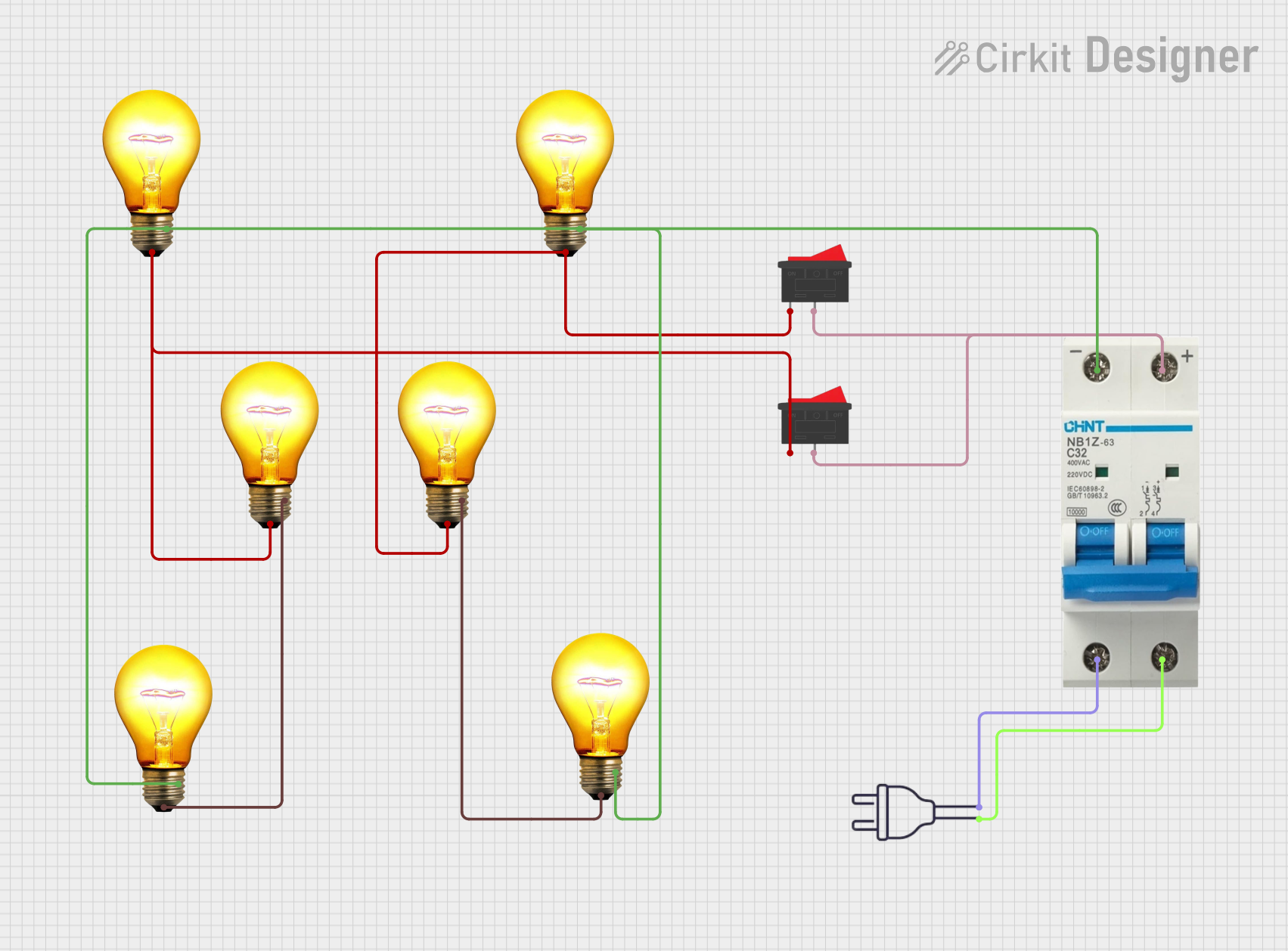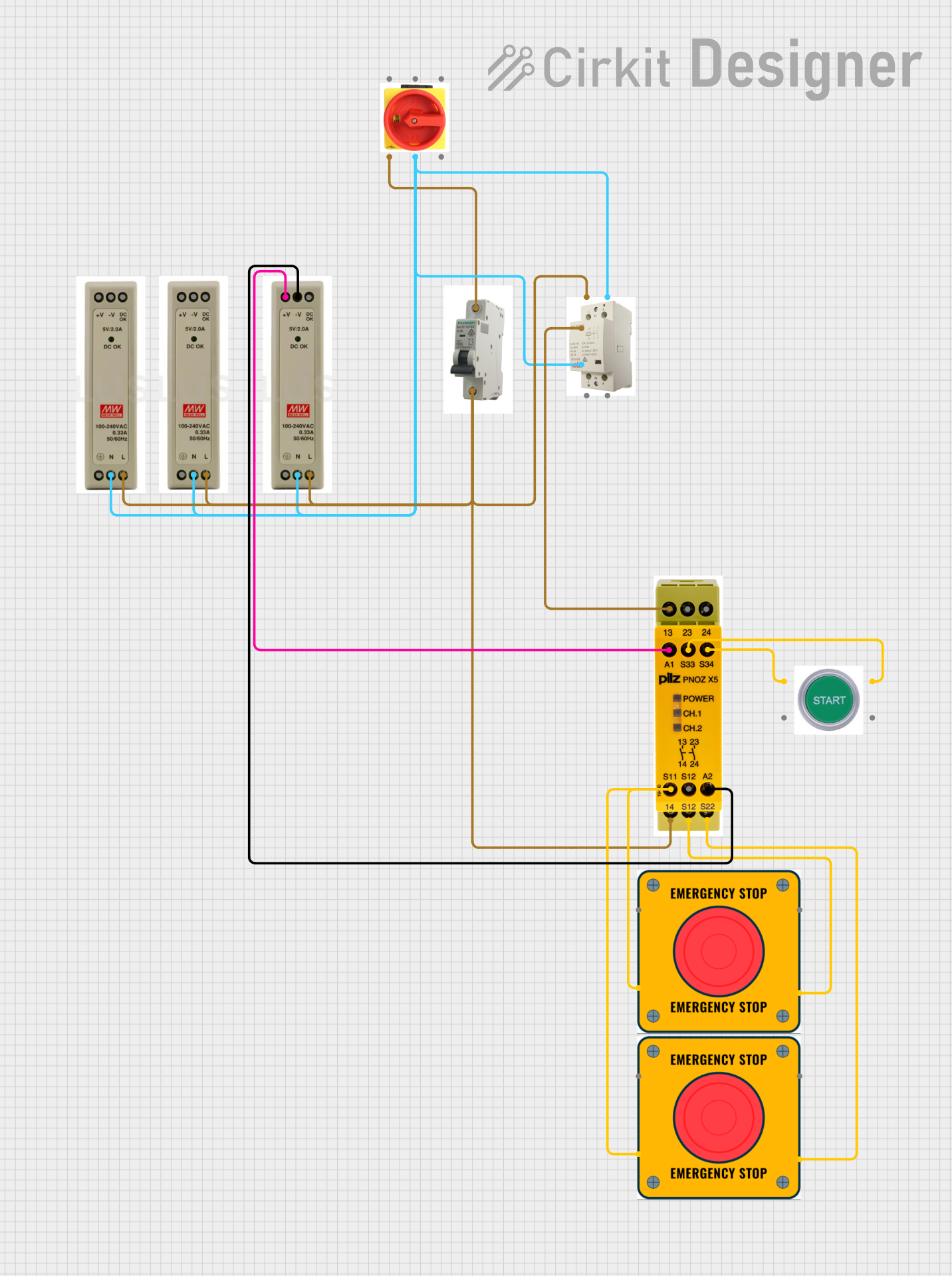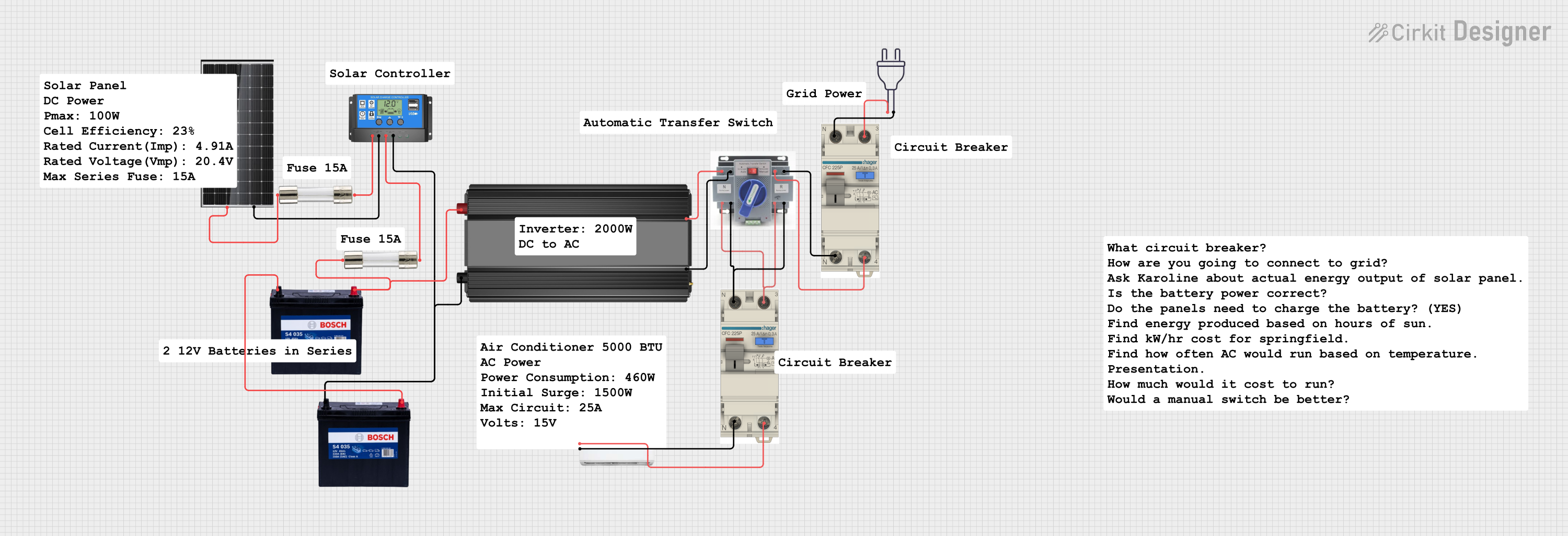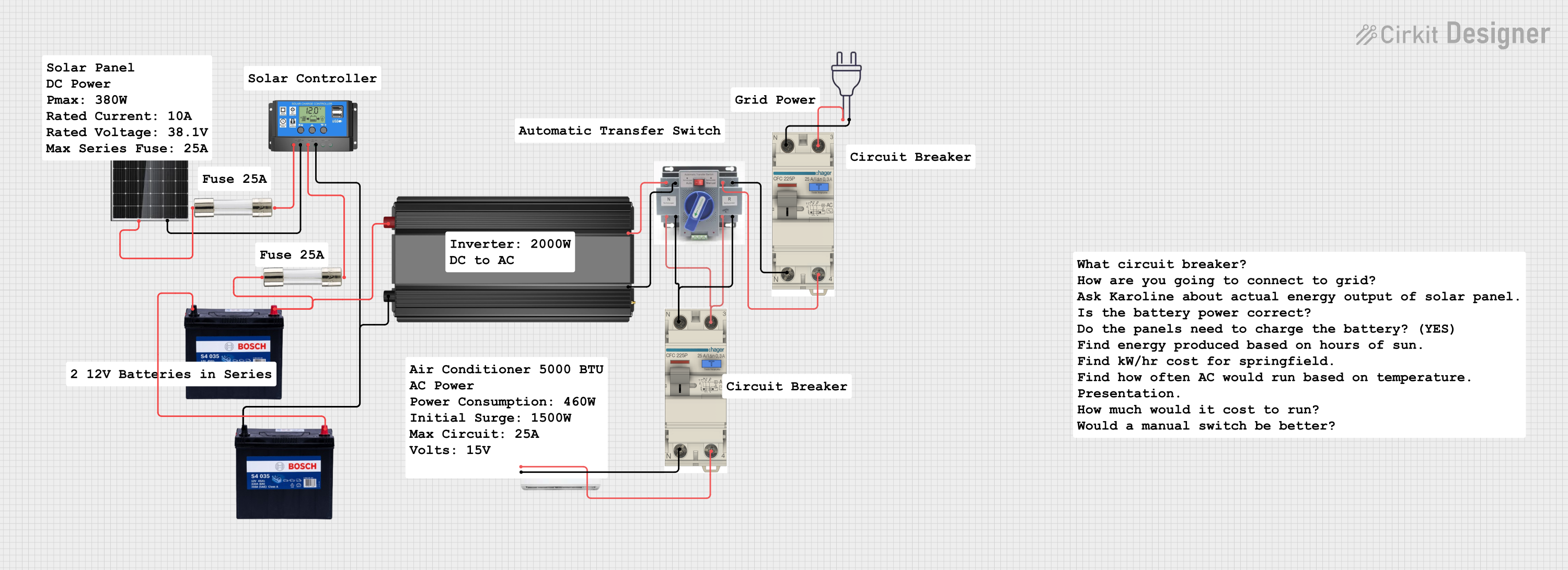
How to Use Breaker 20A: Examples, Pinouts, and Specs

 Design with Breaker 20A in Cirkit Designer
Design with Breaker 20A in Cirkit DesignerIntroduction
The Breaker 20A by Legrand is a 20-amp circuit breaker designed to protect electrical circuits from overloads and short circuits. It ensures the safety of electrical systems by interrupting the flow of electricity when the current exceeds safe levels. This component is essential in residential, commercial, and industrial electrical installations to prevent damage to wiring, appliances, and other connected devices.
Explore Projects Built with Breaker 20A

 Open Project in Cirkit Designer
Open Project in Cirkit Designer
 Open Project in Cirkit Designer
Open Project in Cirkit Designer
 Open Project in Cirkit Designer
Open Project in Cirkit Designer
 Open Project in Cirkit Designer
Open Project in Cirkit DesignerExplore Projects Built with Breaker 20A

 Open Project in Cirkit Designer
Open Project in Cirkit Designer
 Open Project in Cirkit Designer
Open Project in Cirkit Designer
 Open Project in Cirkit Designer
Open Project in Cirkit Designer
 Open Project in Cirkit Designer
Open Project in Cirkit DesignerCommon Applications and Use Cases
- Residential Electrical Panels: Protects home wiring and appliances from electrical faults.
- Commercial Buildings: Ensures safe operation of lighting, HVAC systems, and office equipment.
- Industrial Systems: Safeguards machinery and equipment from electrical overloads.
- Renewable Energy Systems: Used in solar panel installations to protect circuits.
- Temporary Power Systems: Provides circuit protection in portable power setups.
Technical Specifications
The following table outlines the key technical details of the Legrand Breaker 20A:
| Specification | Details |
|---|---|
| Rated Current | 20 Amperes |
| Rated Voltage | 120/240 Volts AC |
| Interrupting Capacity | 10,000 Amperes (10 kA) |
| Type | Thermal-Magnetic Circuit Breaker |
| Poles | Single-Pole |
| Mounting Style | DIN Rail or Panel Mount |
| Operating Temperature | -25°C to +70°C |
| Compliance Standards | UL 489, IEC 60947-2 |
Pin Configuration and Descriptions
The Legrand Breaker 20A does not have traditional pins like electronic components but instead features terminals for wire connections. The table below describes the terminal configuration:
| Terminal | Description |
|---|---|
| Line Terminal | Connects to the incoming power supply (hot/live wire). |
| Load Terminal | Connects to the outgoing circuit (wiring to the load or device being protected). |
| Ground Screw | Provides a connection point for grounding the breaker (if applicable). |
Usage Instructions
How to Use the Breaker 20A in a Circuit
- Turn Off Power: Before installation, ensure the main power supply is turned off to avoid electrical shock.
- Mount the Breaker: Secure the breaker onto a DIN rail or panel mount in the electrical panel.
- Connect Wires:
- Attach the incoming power supply wire to the Line Terminal.
- Connect the outgoing circuit wire to the Load Terminal.
- If required, connect the ground wire to the Ground Screw.
- Tighten Connections: Use a screwdriver to securely fasten the wires to the terminals.
- Test the Breaker:
- Turn the breaker to the "ON" position.
- Verify that the connected circuit is functioning correctly.
- Reset After Tripping: If the breaker trips, identify and resolve the cause of the overload or short circuit before resetting it.
Important Considerations and Best Practices
- Wire Gauge: Use appropriate wire gauge for a 20A circuit (e.g., 12 AWG for copper wires).
- Load Calculation: Ensure the total load on the circuit does not exceed 20 amps.
- Proper Grounding: Always ground the breaker and connected devices to prevent electrical hazards.
- Avoid Overheating: Install the breaker in a well-ventilated panel to prevent overheating.
- Periodic Testing: Test the breaker periodically to ensure it functions correctly.
Arduino UNO Integration
While the Breaker 20A is not directly used with microcontrollers like the Arduino UNO, it can be part of a larger system where the Arduino monitors or controls the circuit. For example, you can use a current sensor with the Arduino to monitor the load on the breaker. Below is an example code snippet for monitoring current using an ACS712 current sensor:
// Include necessary libraries
const int sensorPin = A0; // Connect ACS712 output to Arduino analog pin A0
float sensitivity = 0.1; // Sensitivity for 20A ACS712 (0.1 V/A)
float offsetVoltage = 2.5; // Offset voltage at 0A (for ACS712)
// Function to read current
void setup() {
Serial.begin(9600); // Initialize serial communication
}
void loop() {
int sensorValue = analogRead(sensorPin); // Read sensor value
float voltage = (sensorValue / 1023.0) * 5.0; // Convert to voltage
float current = (voltage - offsetVoltage) / sensitivity; // Calculate current
// Print current to the serial monitor
Serial.print("Current: ");
Serial.print(current);
Serial.println(" A");
delay(1000); // Wait 1 second before next reading
}
Troubleshooting and FAQs
Common Issues and Solutions
| Issue | Possible Cause | Solution |
|---|---|---|
| Breaker trips frequently | Overloaded circuit | Reduce the load on the circuit or redistribute devices to other circuits. |
| Breaker does not reset | Persistent short circuit or fault | Inspect the wiring and connected devices for faults before resetting. |
| Breaker feels hot to the touch | Overheating due to high ambient temperature | Ensure proper ventilation around the breaker panel. |
| Loose connections at terminals | Improper wire fastening | Tighten the terminal screws securely. |
| Breaker does not trip during overload | Faulty breaker | Replace the breaker with a new one. |
FAQs
Can I use the Breaker 20A for DC circuits?
- No, this breaker is designed for AC circuits only. Use a DC-rated breaker for DC applications.
What happens if I exceed the 20A rating?
- The breaker will trip to protect the circuit from damage due to overload or short circuit.
How do I know if the breaker is faulty?
- If the breaker does not trip during an overload or cannot be reset, it may be faulty and should be replaced.
Can I install the breaker myself?
- If you are not experienced with electrical systems, it is recommended to hire a licensed electrician for installation.
What is the lifespan of the Breaker 20A?
- The lifespan depends on usage and environmental conditions but typically lasts for several years under normal operation.